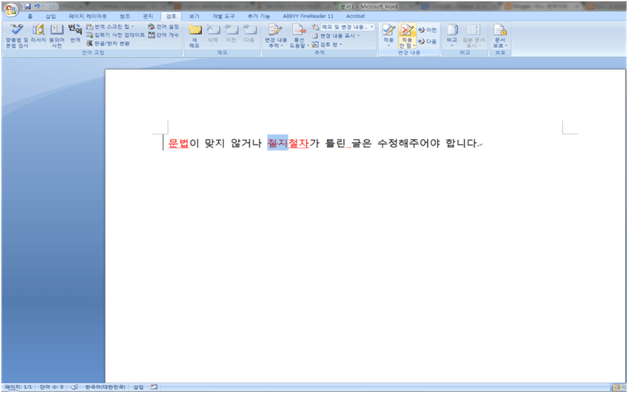In this post we will talk about the ‘Track Changes’ function, which is useful (nay, really necessary) during proofreading and finalization. The ‘Track Changes’ function lets others know what you have changed in the document afterwards.
This will be easier to understand if you try it yourself rather than reading about it, so I’ll post some images for your reference.

As you can see in the image, you will see the ‘Track Changes’ button under the ‘Review’ tab. Just click on that. To turn off the function, click on the same buttons again (toggle key). If you make changes in the document (for example: deleting or adding words while proofreading), the part you edited will be marked in red.

I’ve changed and added a few words and added a comma. If the proofreader sends this document to the translator (through an agency, of course), the translator will know what changes have been made. The translator then finalizes the document, meaning that he or she will have to either accept or reject the proofreader’s changes. You can select ‘accept’ or ‘reject’ starting from the first edit, as you can see in the image below. Then, the cursor automatically moves to the next proofread word. You can accept or reject by clicking on the corresponding options. After you’ve selected one, the cursor will move to the next proofread word.

The above image shows the screen after I’ve clicked ‘reject’ once.
The quality of the translated document increases after the initial translator goes through each suggestion made by the proofreader. This process is called ‘finalization,’ and the finalized file is sent to the client.

